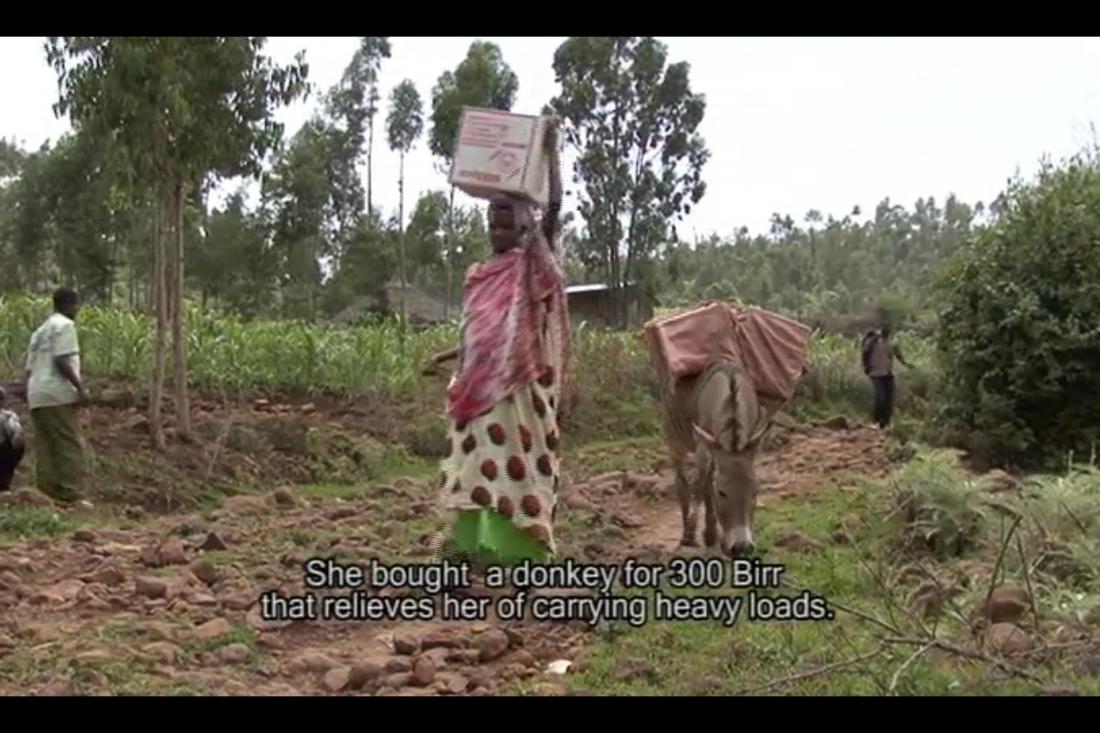The Impact of Role Models on Parental Aspirations and Investments in Children's Education in Ethiopia
- Parents
- Student learning
- Aspirations
- Information
The educational choices parents make for their children may reflect poor families’ hopes and aspirations for the future. Researchers conducted a randomized evaluation to test whether exposing people to a documentary featuring potential role models impacted parents’ educational aspirations for their children or their actual investments in education, and if these impacts varied by gender. Exposing families to the documentary increased parental aspirations for educational attainment as well as investments in education, but it did not close the gender gap for either.
Policy issue
Parents in poor communities may be able to improve their children’s futures by investing in their education. Since it takes time to realize the benefits of education, educational choices and investments may reflect poor families’ hopes and aspirations for the future. Additionally, parents often invest less in the education of girls than boys. Some research suggests that role models can increase the aspirations for and investments in people, especially for girls and women. What are the effects of showing families documentaries about potential role models on parents’ aspirations for their children’s education, and does it increase investment in education? Does showing the documentaries reduce the gap in educational aspirations and attainment between girls and boys?
Context of the evaluation
This evaluation took place in Doba Woreda, a remote and poor district in rural Ethiopia, where parents have high aspirations for their eldest child’s educational attainment: on average, parents in the sample aspired for their eldest child to complete more than secondary school. Parental aspirations, however, varied based on the gender of their child, and on their own background. For example, parents were nine percentage points less likely to aspire for their daughters to reach post-secondary education than their sons. Additionally, mothers had lower aspirations for their eldest children than fathers, and parents with no education (more than half the sample) had lower aspirations for their eldest children’s education than parents with education.
Parents had high aspirations for their children’s educational attainment, but what were their actual investments in education? The average household in this sample had about two children between 7 and 15 years of age—the age range when schooling is compulsory. At the time of the study, roughly half of those children went to school, and they spent on average six hours in school and almost two hours studying per day. In households that had more girls than boys, children spent time in school or studying. Additionally, households spent an average of US$9.44 on educational materials and fees in the last three months before the survey.

Details of the intervention
Researchers conducted a randomized evaluation to test whether exposing people to a documentary featuring a possible alternative future impacted parents’ aspirations for or investment in the education of their children aged 7-15.
Researchers randomly assigned 18 households per village, close to 1,100 households in total, to one of three groups as follows:
- Inspirational documentary: household heads and their spouses were invited to watch a one-hour inspirational documentary showing two men and two women from a background similar to their own who improved their lives through their own efforts.
- Placebo group: household heads and their spouses were invited to watch a movie unrelated to the inspirational documentary.
- Comparison group: households were not invited to watch either the documentary or movie.
To understand the educational aspirations that parents had for their children, researchers surveyed both the mother and father of the eldest child within each household both before the intervention, and six months after the intervention. Researchers collected information on aspirations, including their aspired level of education for their eldest child. They also collected information on educational investments, including whether or not children aged 7-15 were in school, the amount of time children spent in school or studying, and the amount of money households spent on educational materials and fees in the last three months.
Results and policy lessons
Showing the documentary to families increased parental aspirations for educational attainment and increased investments in education across all measures reported. However, it did not reduce the gap in educational aspirations or investments between girls and boys.
Parental aspirations for schooling: Six months after watching the documentary, parents had higher aspirations for the educational attainment of their eldest child compared to parents who did not watch the documentary, regardless of whether the child was a girl or a boy. However, aspirations increased roughly the same amount for both boys and girls, so the documentary did not close the gender gap in parental aspirations. The documentary did, however, reduce the educational aspirational gap between educated and non-educated parents by about two-thirds.
Actual investments in schooling: Six months after watching the documentary, actual investments in education for children aged 7-15 increased across all measures reported compared to the investments of families who did not watch the documentary. Enrollment was about 18 percent higher for families exposed to the documentary, children spent an average of about an hour a day more at school and 15 percent more time (17 minutes per day) studying, and families spent about 21 percent more (US$2.01) on schooling compared to families who were not invited to watch the documentary or placebo movie. However, exposure to the documentary did not reduce the gender gap in educational investments, and it may have actually increased the difference in time spent in school between girls and boys.
Informed by the results of this study, researchers implemented related evaluations with a partner in Kenya. For more information on these studies, please see this evaluation conducted between 2011-2013 and this evaluation conducted between 2015-2018.


